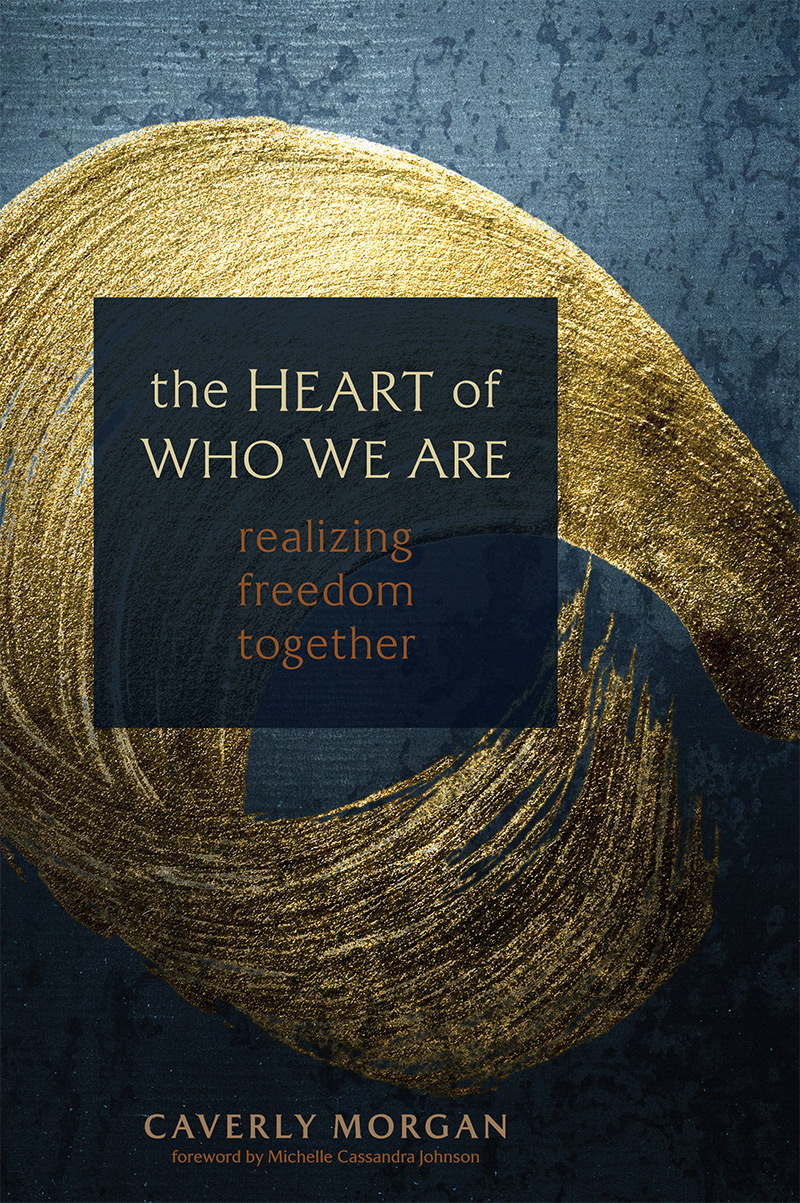by Caverly Morgan
 We all long to be happy. Not happy as in glee but deep contentment. We all long to feel at ease, to know that we’re okay, that life is okay, to be at peace. And we’re deeply habituated to look for this happiness outside us, to grasp and scramble for an experience that, at best, ends up being fleeting, then something we long for again. We forget that this experience we long for is already seated in the heart of who we are—and that it’s always here.
We all long to be happy. Not happy as in glee but deep contentment. We all long to feel at ease, to know that we’re okay, that life is okay, to be at peace. And we’re deeply habituated to look for this happiness outside us, to grasp and scramble for an experience that, at best, ends up being fleeting, then something we long for again. We forget that this experience we long for is already seated in the heart of who we are—and that it’s always here.
Have you ever touched this peace, this contentment, this deep knowing of who you truly are and then struggled because you recognized the degree to which the world around you didn’t reflect this experience of our true nature?
Our true nature.
Oneness. Spiritual practice reveals the reality of oneness. Part of me feels called to write about this reality and nothing else. To live quietly. To meditate often. To be still. To perhaps make goat cheese on an island in the Puget Sound with my husband and our dogs.
Another part of me can’t write or teach about this reality exclusively. I am propelled by a deep call to address how in so many spiritual practice settings this oneness is named yet is not reflected in our daily lives as practitioners. Not to mention how many report feeling overlooked, excluded, and ignored in prominent spiritual communities, the realities of their lives unseen, even unwelcome.
How can I, a former monk with a lifelong commitment to non-harming, talk about oneness while participating in systems that I recognize as harmful–-systems that I can’t be teased apart from? How can I speak about this reality of oneness without addressing the ways we often don’t act on behalf of this knowing? How can I recognize the privileges afforded to me based on race and class while also coming to terms with the way it is not a “privilege” to be part of a system of domination and othering? What do I mean by “othering”? Actions arising from the perception of separation; behaviors that don’t reflect the truth of oneness.
This divide speaks to two realities: the reality of interconnection and oneness—the absolute reality; and the reality of isolation and separation—our relative experience, where we enact the shared delusion that we are fundamentally separate from each other on personal and collective levels.
THESE ARE TWO TRUTHS.
THE TRUTH OF THE ABSOLUTE AND THE TRUTH OF THE RELATIVE.
THE RELATIVE—THE CONVENTIONAL, THE MATERIAL; THINGS AS THEY APPEAR TO BE.
THE ABSOLUTE—THE ULTIMATE; THINGS AS THEY TRULY ARE. EMPTY.
EMPTY—NOT AS IN A GRIM VOID OR A KIND OF NIHILISM. NOT NOTHINGNESS.
BUT EMPTY OF OBJECTIVE EXPERIENCE. EMPTY OF LANGUAGE. EMPTY OF MEANING.
EMPTY OF SEPARATENESS.
EVERYTHING COMES FROM SOMETHING ELSE.
EVERYTHING IS CONNECTED TO SOMETHING ELSE.
NO THING EXISTS IN A VACUUM.
NO THING STANDS ON ITS OWN.
THINGS SIMPLY APPEAR TO.
EMPTINESS MEANS EMPTY OF LIMITATION.
EMPTINESS MEANS SPACIOUSNESS
EMPTINESS MEANS OPENNESS.
EMPTINESS—THE HOME OF POSSIBILITY.
THE GREAT MYSTERY.
EMPTINESS MEANS OPENNESS.
EMPTINESS—THE HOME OF POSSIBILITY.
THE GREAT MYSTERY.
WHERE NOTHING IS FORMED.
AND NOTHING IS KNOWN.
I am called to speak to both the absolute and relative realities, to reconcile these truths, to not omit any part of reality. How can our personal and collec- tive practices be employed not merely to “transcend” the pain of the world but also to help us to accept and be with the pain of the world so we can then trans- form it? Transforming not only individually but also collectively?
What are the ways that our spiritual practices have been conditioned to have filters? To be by-products of the very distortions we aim to see through? How can we not only directly experience oneness but also apply that experience and understanding to address the impacts of the delusion of separation and pain in the world? Most importantly, to not just address the impacts but also to get to the root issue?
I long to live in a world that reflects the reality of oneness rather than the distortion of our shared delusion. I long to live in a reality that reflects the deepest truth of our shared being, as the meditation teacher Rupert Spira names it. I know this world from my meditation cushion in my remote hermitage on the hill, and I know this world from inside the walls of public high school classrooms. What is possible reveals itself in countless ways.
Editor’s notes:
This text was excerpted from the book The Heart of Who We Are: Realizing Freedom Together by Caverly Morgan. Copyright © 2022 Caverly Morgan. Reprinted with permission from the author and the publisher, Sounds True. The Heart of Who We Are will be released November 29th, 2022. Pre-order here.
Caverly Morgan (bio) will be teaching in the Compassion Year (2022–2023) of our Contemplative Psychotherapy Program. Find out more about the program and apply today.
